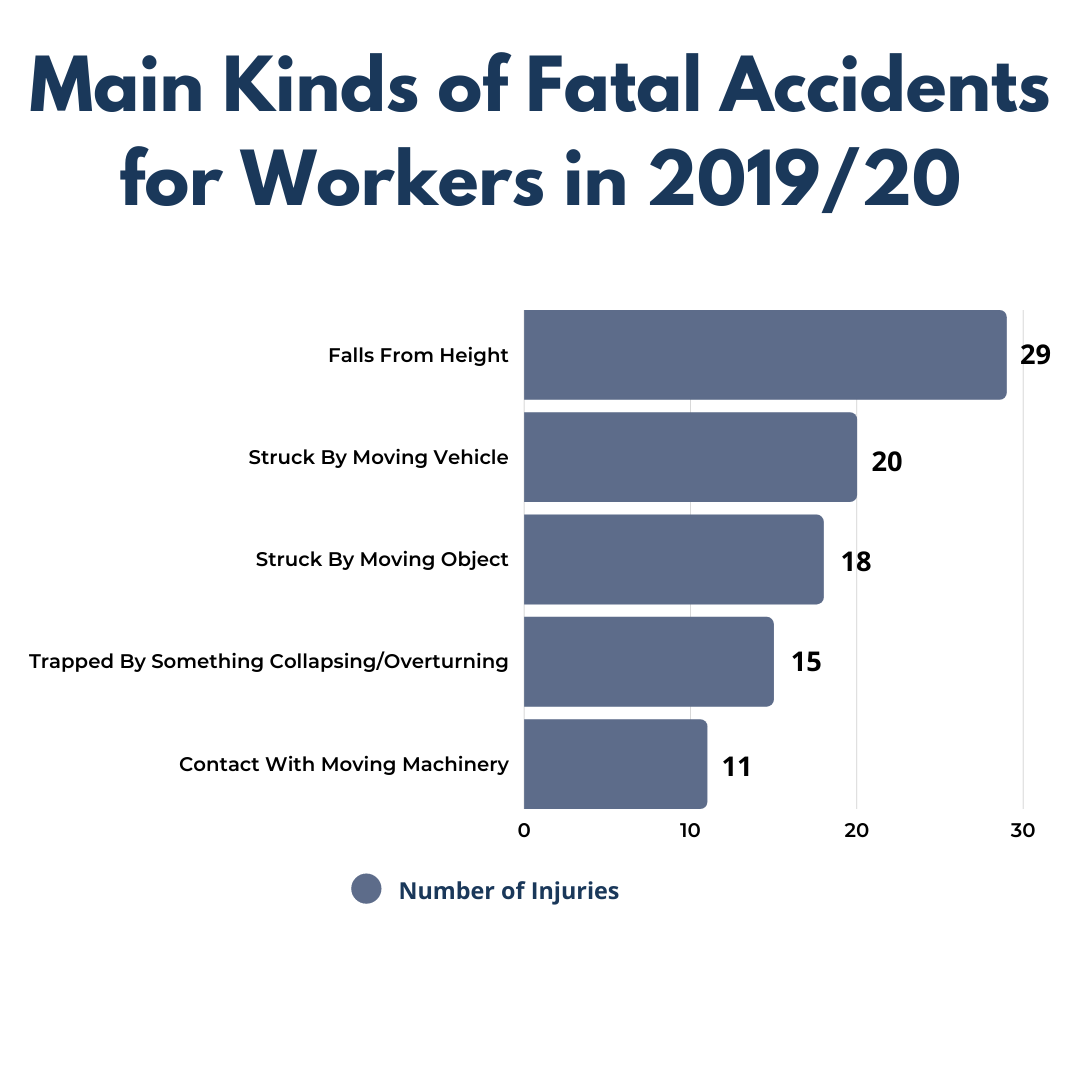Working at Height is a serious issue that is relevant to almost every profession due to it covering a wide range of work usage, such as unsafe ladder practices to working on fragile roofs. It is our Christmas hazard because who would know this better than Father Christmas himself? Every year he is certain to brush up on his working at height knowledge in the run-up to that special night of the year when he delivers presents to every rooftop in the world!
You can get your knowledge up to scratch too with our RoSPA Accredited Working at Height online training course which you can complete from anywhere, even the North Pole! You can get 10% off this and our Alcohol & Drugs Awareness course (because intoxication and heights is a definite no go and as funny as it sounds, a drunk Santa could definitely ruin Christmas!) with the code WaH20!
What’s the Danger?
The latest data from the HSE shows that sadly there were 111 workers killed in 2019/20 as reported under RIDDOR (Reporting of Injuries, Diseases and Dangerous Occurrences Regulations 2013). Of these 111, 29 workers were killed from falls from height making it the main cause of fatal accidents to workers in 2019/20.
Therefore, working at height remains one of the biggest causes of fatalities and major injuries and anyone prosecuted for not ensuring this type of work is carried out safely when an accident does happen can be fined heavily; in 2019/20 a total of £35.8 million worth of fines were given out by the HSE, with the average fine per case was £110,000.
Control Measures: Mitigating the Risks
 As dangerous as it can be, fortunately, there are some simple and effective ways to assess and mitigate the risks associated with Working at Height. These sensible precautions can apply both to low-risk and high-risk scenarios:
As dangerous as it can be, fortunately, there are some simple and effective ways to assess and mitigate the risks associated with Working at Height. These sensible precautions can apply both to low-risk and high-risk scenarios:
- Assess the risks: As in any Health and Safety conundrum, knowledge is power. Adequately weighing up the dangers of a task empower decision-makers to take the safest course of action.
- Make a decision: If reasonably practicable, avoid Working at Height altogether, as the safest way to prevent injury is not to undertake dangerous work. If not possible, put measures in place to prevent falls or minimise injuries (see section below).
Do’s & Don’t
So, you have carried out extensive risk assessments and communicated your ideas, and you determine that Working at Height is not only reasonable, but necessary, to the success of a project – what next? There are several key Dos and Don’ts that should be factored in to ensure that you keep those undertaking the work safe.
Here is a summarising graphic showing the key points:




